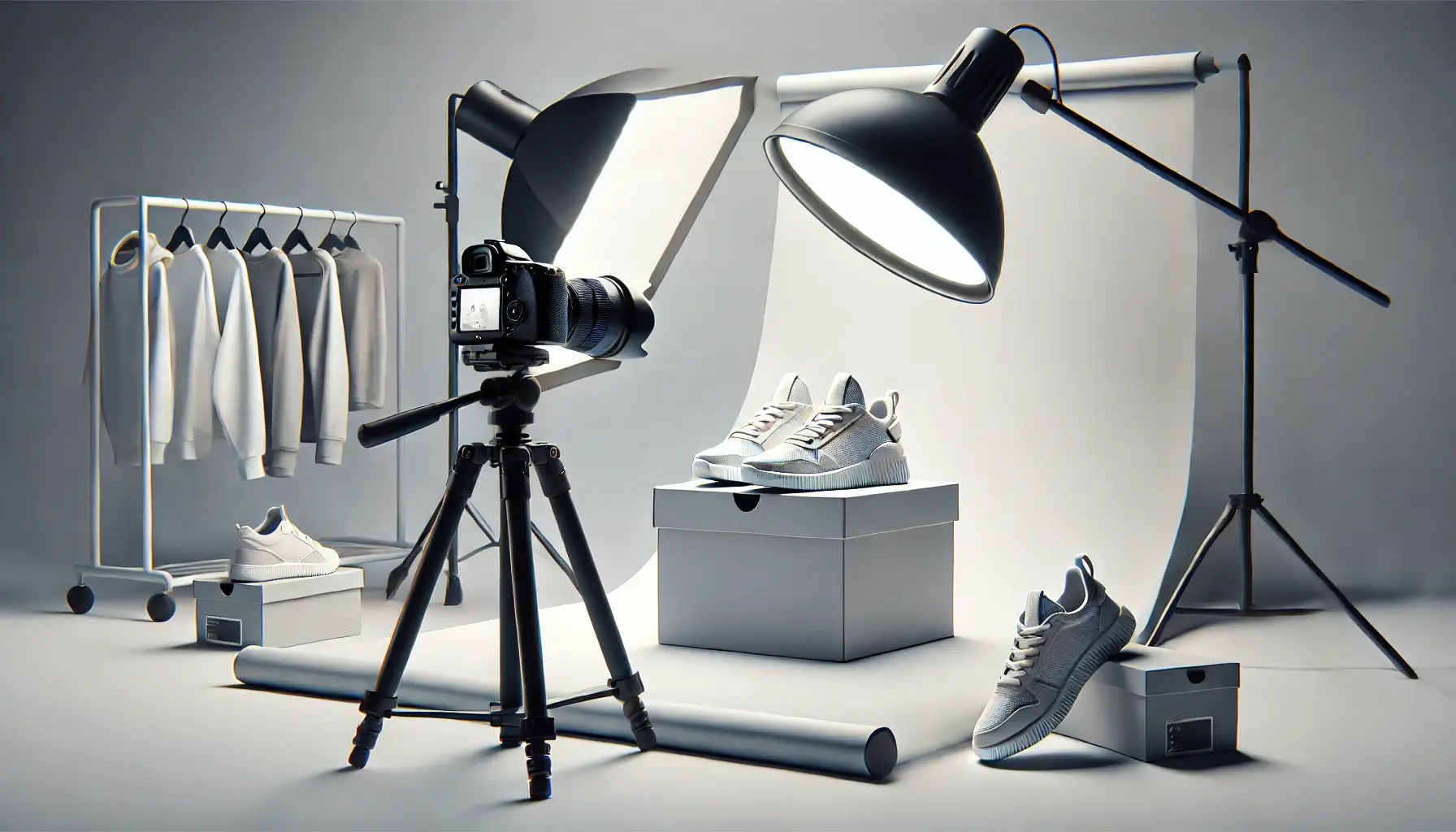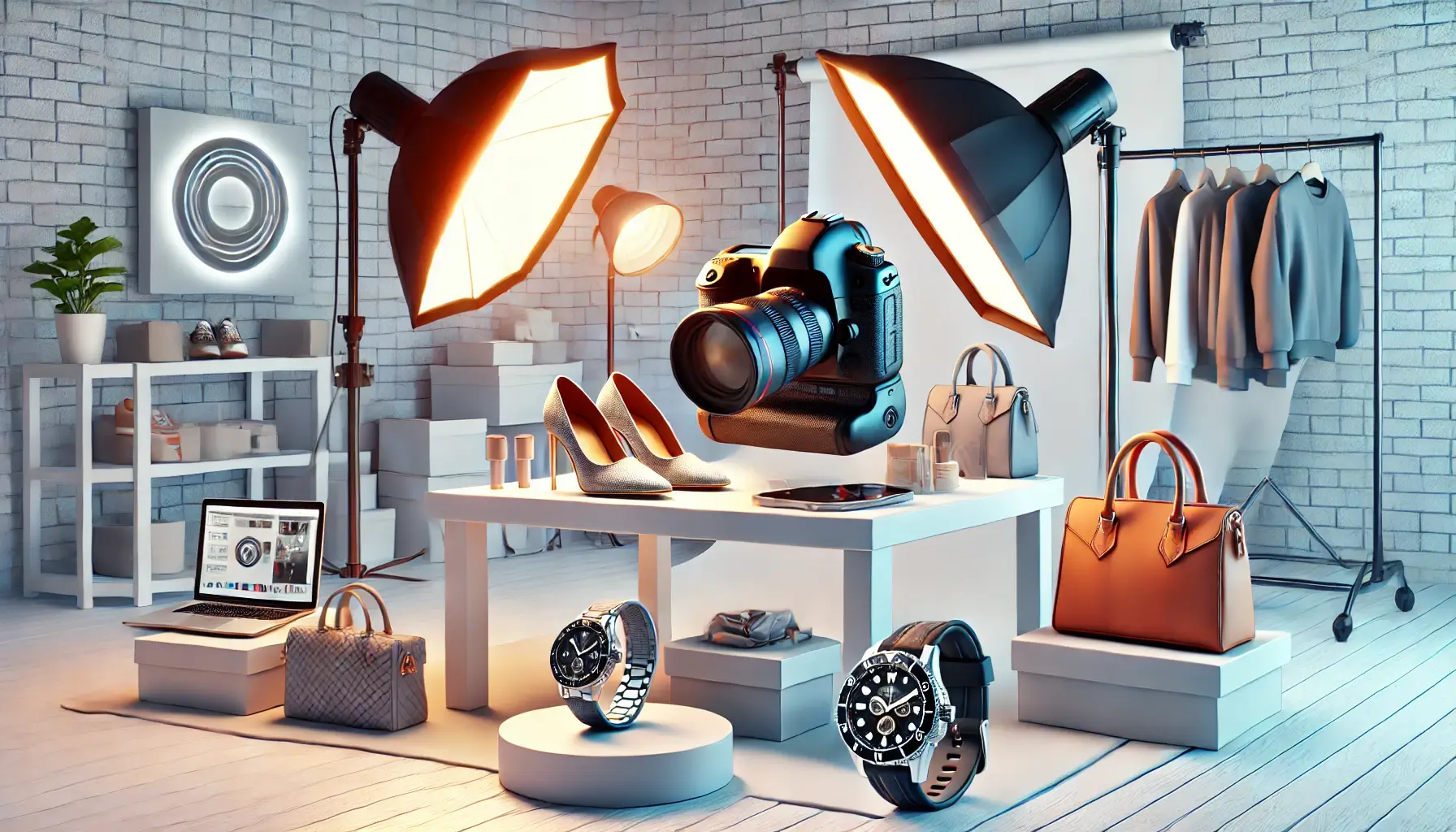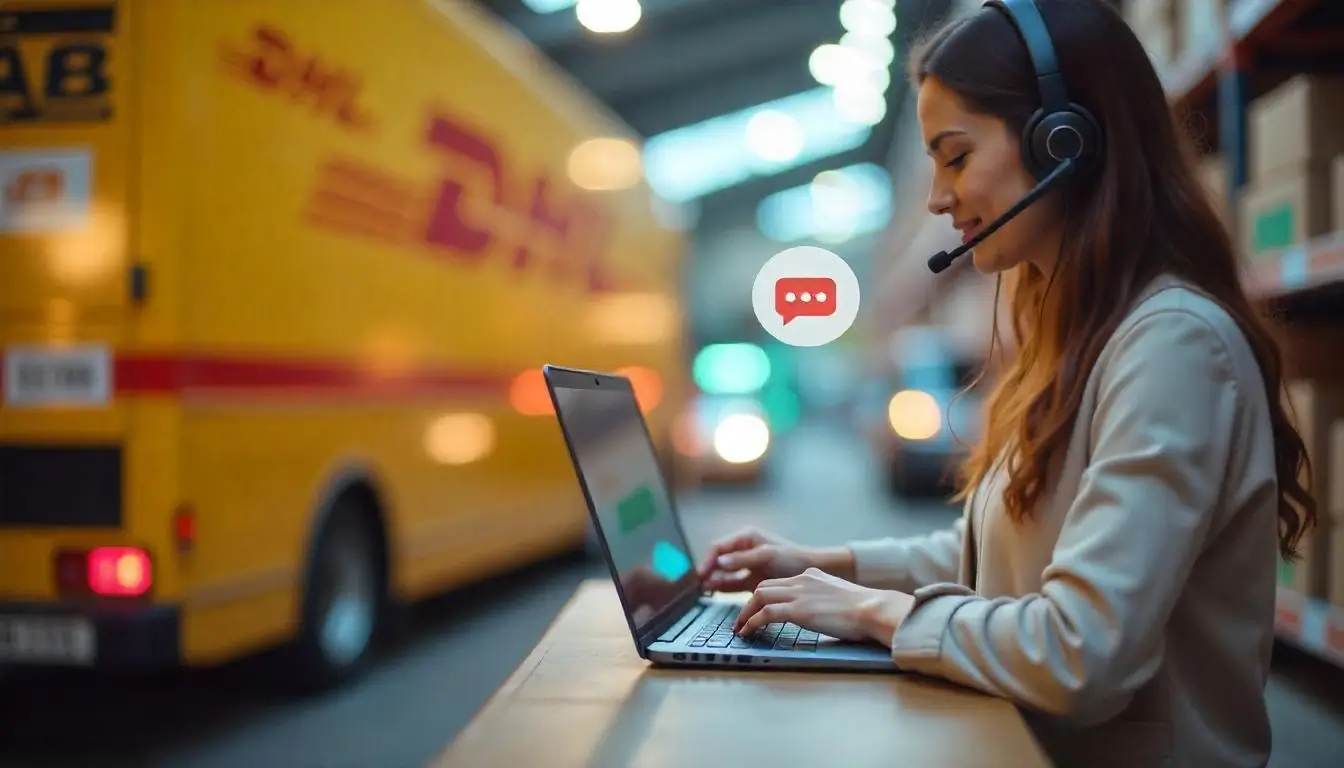Introduction
In the world of online shopping, high-quality product images can make or break a sale. With customers relying solely on visuals, mastering ecommerce photography is essential for any seller. Whether you’re an entrepreneur, small business owner, or a professional photographer, understanding how to shoot stunning product images will help you increase conversions and build brand trust.
This guide covers essential ecommerce photography tips, including the best equipment, lighting techniques, and post-processing tricks to take your product images to the next level.
Why Ecommerce Photography Matters
📌 First impressions count: Shoppers decide within seconds whether they trust your brand based on your images.
📌 Boosts conversions: High-quality photos can increase sales by up to 30%.
📌 Reduces returns: Clear, well-lit images help customers make informed decisions, minimizing returns.
📌 Enhances branding: Consistent and professional photography strengthens brand identity.
Investing in ecommerce photography is an investment in higher sales and better customer experiences.
Essential Equipment for Ecommerce Photography
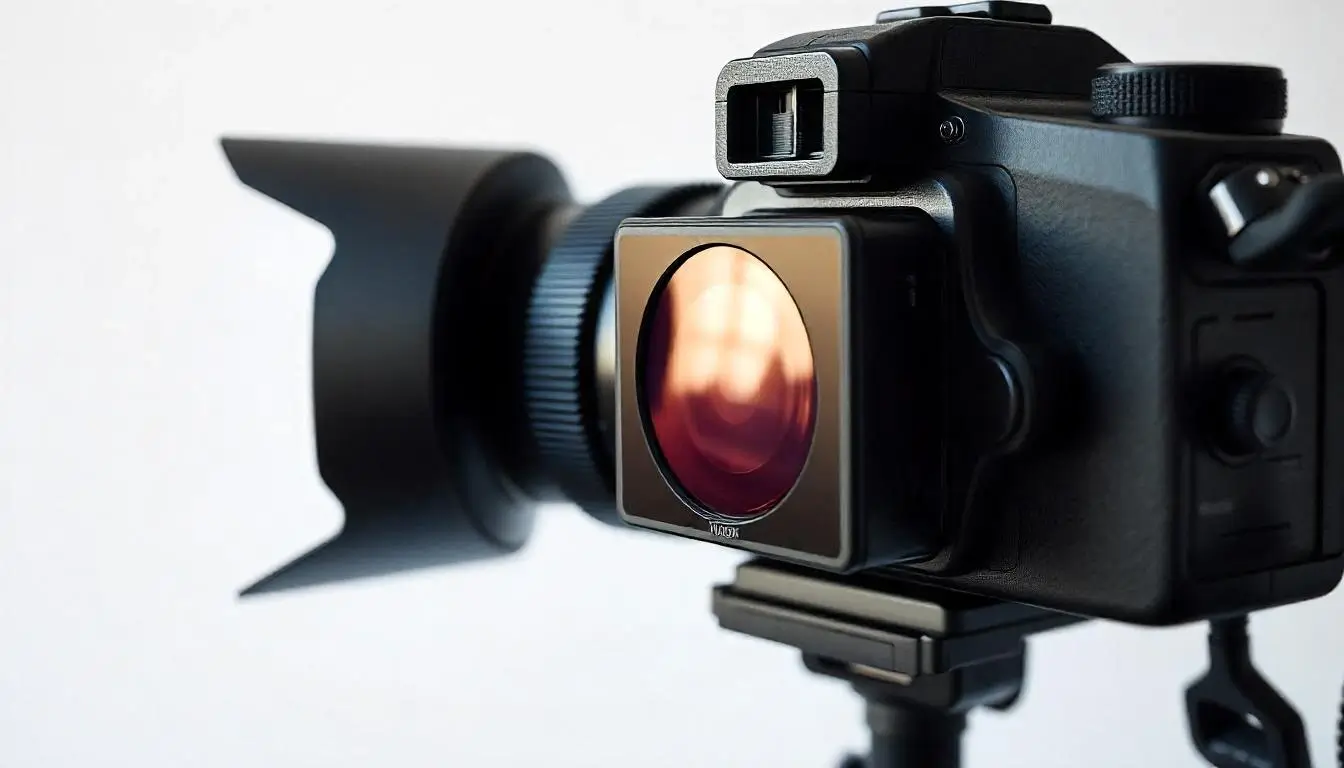
To capture stunning product images, you need the right tools. Here’s what you’ll need:
📷 Best Camera for Ecommerce Photography
✅ DSLR or Mirrorless Cameras – Canon EOS Rebel T7, Nikon D7500, Sony A7 III
✅ Smartphones with Pro Mode – iPhone 15 Pro, Samsung Galaxy S24 Ultra
✅ Tripod for Stability – Reduces blur and ensures consistency
💡 Lighting Setup for Product Photos
✅ Softbox or LED Lights – Diffused lighting minimizes shadows
✅ Natural Light – Ideal for lifestyle product images
✅ Light Reflectors – Helps balance shadows and highlights
🎭 Backdrop & Props
✅ White or Neutral Backdrops – Creates a clean, professional look
✅ Props that Complement the Product – Adds context and enhances storytelling
🛠 Photo Editing Tools
✅ Adobe Photoshop & Lightroom – Industry-standard editing software
✅ Canva & Snapseed – Free alternatives for quick edits
How to Capture Stunning Ecommerce Photos
1️⃣ Use Proper Lighting
Lighting is key to high-quality ecommerce photography. Natural light works well for soft, organic shots, while artificial lighting provides full control over shadows and highlights.
- Use two light sources (key light & fill light) for even lighting.
- Avoid harsh shadows by using diffusers or reflectors.
- Experiment with soft lighting for a professional touch.
2️⃣ Choose the Right Background
A cluttered background distracts from your product. Stick to:
- White backgrounds for clean and professional shots.
- Contextual backgrounds for lifestyle or action shots.
- Branded backgrounds for a unique and consistent look.
3️⃣ Focus on Composition
A well-composed image enhances product appeal. Follow these rules:
✔ Rule of Thirds – Position products off-center for a balanced look.
✔ Fill the Frame – Get close-up shots to highlight product details.
✔ Consistent Angles – Use uniform angles across all products.
4️⃣ Shoot Multiple Angles
Customers want to see all aspects of a product before purchasing. Include:
📸 Front, back, and side views
📸 Close-ups of textures or special features
📸 Lifestyle shots in real-use scenarios
5️⃣ Maintain Image Consistency
- Use the same lighting setup for all products.
- Stick to a fixed image resolution for a uniform catalog.
- Align product angles for a cohesive online store look.
Post-Processing & Editing Tips
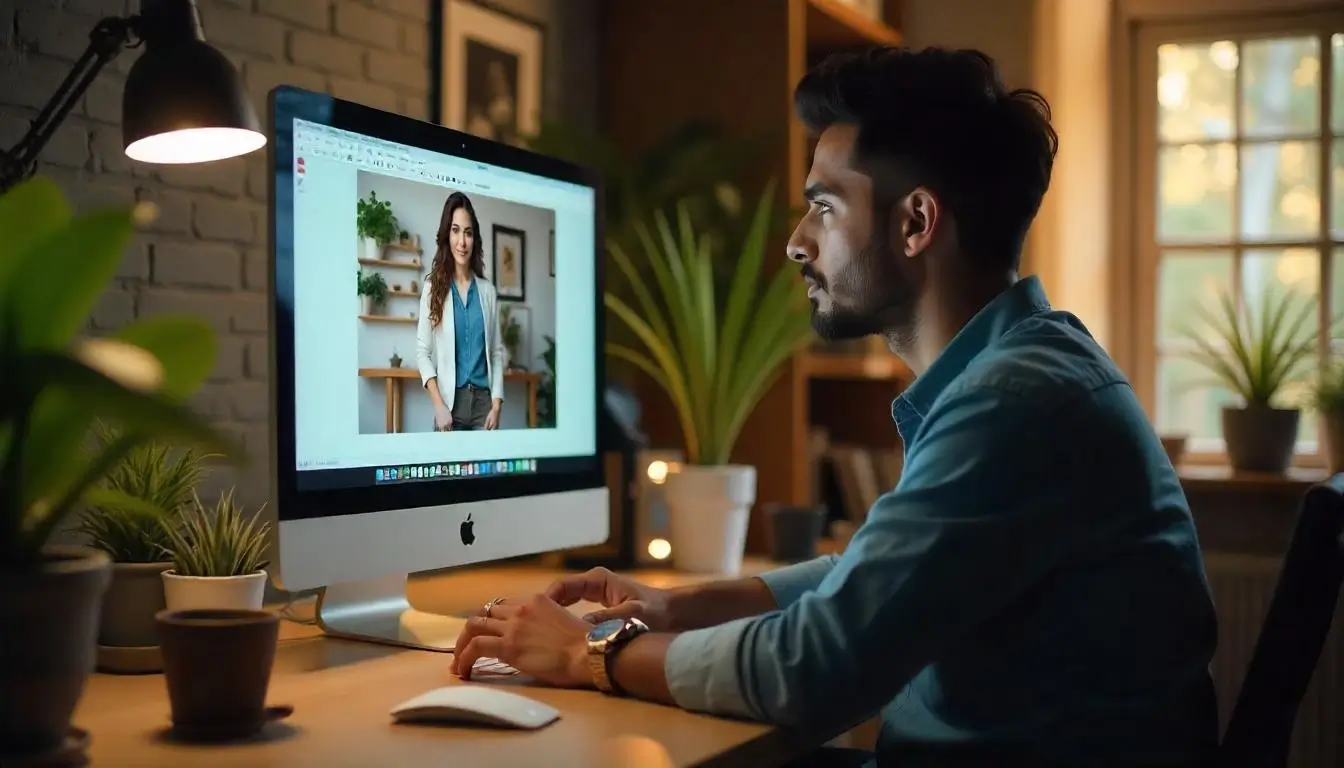
Even the best raw photos need some editing touch-ups. Follow these steps:
✅ Adjust Brightness & Contrast
- Enhance visibility without overexposing the image.
✅ Remove Backgrounds (If Needed)
- Use Photoshop’s Remove Background Tool or Remove.bg.
✅ Retouch Imperfections
- Spot-healing tools can remove dust or unwanted reflections.
✅ Optimize for Web Use
- Resize and compress images to improve page load speed without losing quality.
Best Image Formats for Ecommerce:
- JPEG – Smaller file size, great for web use.
- PNG – Supports transparency, ideal for logos.
- WebP – Modern format with better compression.
Common Ecommerce Photography Mistakes to Avoid
🚫 Poor Lighting – Avoid dark or overly harsh lighting.
🚫 Low-Resolution Images – Blurry photos hurt conversions.
🚫 Distracting Backgrounds – Keep it clean and simple.
🚫 Inconsistent Angles – Maintain uniformity across products.
🚫 Skipping Editing – A little enhancement goes a long way.
By avoiding these mistakes, you can create a professional and appealing ecommerce store.
Conclusion
Great ecommerce photography isn’t just about taking pictures; it’s about telling a story that convinces buyers to make a purchase. By investing in the right equipment, lighting, composition, and editing techniques, you can elevate your product images to a professional level.
Start implementing these tips today, and watch your sales and customer engagement grow! 🚀
📌 Need professional product photography? Explore our recommended tools and resources!
Let me know if you’d like any modifications or additional sections! 😊
- Start Earning: How to Make Money on Taobao Without Big Investment
- Can You Use PayPal on Taobao? Here’s What You Need to Know (2025 Update)
- AI vs. Manual Ecommerce Management: What’s More Effective in 2025?
- Shopify 1099-K Reporting Rules Are Changing: How It Affects Your Online Store
- AliExpress vs Amazon: Which Is Better for Budget Shoppers?
- Is AliExpress Safe in 2025? What Buyers Need to Know Today
- Why Is Pandabuy So Popular? A Deep Dive into Its Rise on Social Media
- How Safe Is Pandabuy? What Every New Shopper Should Know
- How to Use Pandabuy in 2025: Step-by-Step for First-Time Buyers
- Taobao Shipping Explained: Delivery Times & Costs in 2025
- Taobao Payment Not Working Internationally? Here’s Why
- Shopify Experts vs DIY: What’s Best for Your Business?
- Top Dropshipping Businesses to Start in 2025
- How to Use Taobao in English: A Step-by-Step Guide
- Taobao Login Issues & Link Sharing Problems: How to Fix Them
- Is Taobao Safe? What You Need to Know Before Buying
- Shogun Shopify: The Best Page Builder for Your Store
- Magento Marketplace vs Shopify: Which Platform is Best for Sellers?
- How to Hire a WooCommerce Expert: Skills, Costs, and Best Platforms
- Ecommerce Fulfillment Services: How to Choose the Best Solution for Your Business
- Ecommerce explicado: Tipos, beneficios y claves del éxito
- Ecommerce: ¿Qué es y cómo empezar tu tienda online en 2025?
- The Ecommerce Equation: Unlocking Profitable Online Sales Strategies
- Crack the Ecommerce Equation: The Formula for Success in 2025
- Retail Ecommerce Ventures: Transforming Brands into Online Success in 2025
- Ecommerce Photography Tips: Shoot Stunning Product Images Like a Pro
- Best Cameras and Tools for Ecommerce Photography in 2025
- Top B2B Ecommerce Solutions for 2025: Powering Your Business Growth
- How to Choose the Best B2B Ecommerce Solution: A Complete Guide
- Best Ecommerce Website Creators for 2025: Build Your Store in Minutes
- 5 Reasons Why Ecommdirect is a Game-Changer for Online Retailers
- EcommDirect: The Future of Seamless Online Shopping in 2025
- Connective Ecommerce: The Future of Seamless Online Shopping
- Top Ecommerce Web Development Services in Melbourne for 2025
- Ecommerce Web Development Melbourne: Build a High-Converting Online Store
- Top Tips for Choosing the Right Ecommerce Advertising Agency
- Why Every Online Store Needs an Ecommerce Advertising Agency
- Boost Your Sales with the Best Ecommerce Advertising Agency in 2025
- Magento vs. Other Ecommerce Platforms: Which is Best for Your Store?
- Top Features of the Magento Ecommerce Platform You Need to Know
- How to Boost Sales with the Magento Ecommerce Platform
- Top Ecommerce SEO Experts: Boost Your Online Store Traffic
- Why Hiring Ecommerce SEO Experts Is a Game-Changer for Your Store
- Ecommerce Website Development in Dubai: Build Your Store for Success
- Protect Your Online Store with the Right Business Insurance
- Top Insurance Options for Ecommerce Entrepreneurs
- Taobao Shopping Made Easy: Tips for Global Buyers
- Ecommerce Business Insurance: Why It Matters in 2025
- Why Ecommerce Business Is the Best Startup Option Today
- Ecommerce Business Marketing Strategies That Drive Sales
- 10 Common Mistakes to Avoid When Starting an Ecommerce Business
- The Future of Ecommerce Business: Trends to Watch in 2025
- Ecommerce Business Essentials: Tools, Tips, and Strategies for Beginners
- Top 10 Ecommerce Business Ideas to Boost Your Revenue This Year
- How to Start a Successful Ecommerce Business in 2025: A Step-by-Step Guide
- Unlock the Power of Odoo Ecommerce: The Ultimate Solution for Your Online Store
- Expert Ecommerce Website Development Services for Your Store
- Expert Guide to Ecommerce Website Development in Dubai: Build Your Dream Online Store
- Top eCommerce Website Development Companies: Build Your Dream Online Store Today
- Streamlining E-commerce Product Updates with GitHub Workflows
- Monetize Your E-commerce Open-source Projects: A Beginner’s Guide to GitHub Sponsors
- Collaborating with Freelancers on GitHub for E-commerce Projects
- The Role of GitHub in Supporting Multi-language E-commerce Sites
- Using GitHub Actions for E-commerce SEO Audits
- Creating and Managing API Documentation for E-commerce Platforms on GitHub
- Mastering Ecommerce Website Development with GitHub: Tools, Tips, and Best Practices
- Optimizing E-commerce Performance with GitHub Monitoring Tools
- Top GitHub Integrations for Streamlining E-commerce Development and Operations
- Managing Ecommerce Data with GitHub and Git LFS
- Version Control for E-commerce Teams: A Guide to Using Git and GitHub.
- Using GitHub Projects to Manage E-commerce Site Development
- Top GitHub Repos for Enhancing Security on Your E-commerce Site
- Securing Your E-commerce Codebase: Managing Access and Permissions in GitHub
- Managing E-commerce Data with GitHub and Git LFS
- Leveraging GitHub Pages for a Minimalist E-commerce Store
